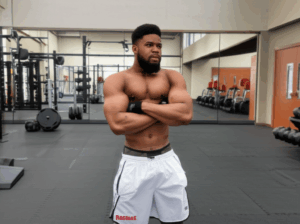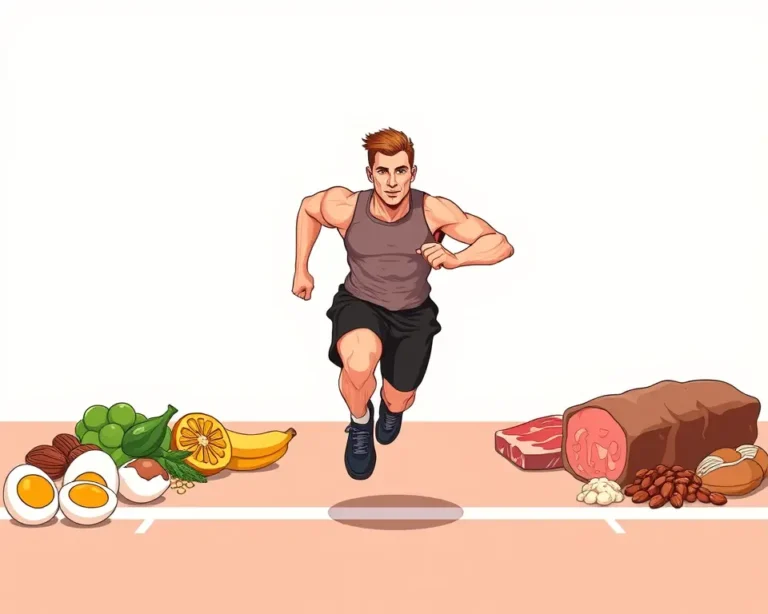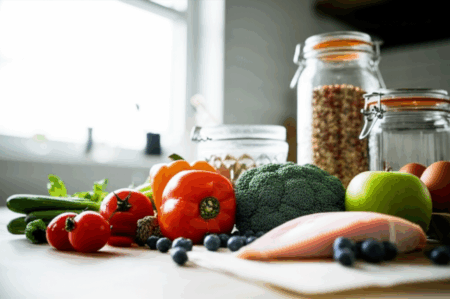Embarking on a fitness journey is an exciting step towards a healthier you. Among the many aspects of fitness, nutrition plays a crucial role, and protein is a key player, especially when you’re just starting. But with so many protein sources available, how do you choose the best one for your needs? This guide breaks down the ideal protein sources for beginners, considering factors like digestibility, nutritional value, and ease of incorporation into your diet.
Why Protein Matters on Your Fitness Journey
Protein is essential for various bodily functions. It’s made up of amino acids, which are the building blocks for repairing and building tissues, including muscles. When you start exercising, your muscles undergo stress and need protein to recover and grow stronger.
Here’s why protein is particularly important when you’re beginning your fitness journey:
- Muscle Repair and Growth: Protein helps repair muscle fibers damaged during exercise and supports the growth of new muscle tissue.
- Satiety and Weight Management: Protein can help you feel fuller for longer, which can be beneficial if your fitness goals include weight management.
- Overall Health: Protein is vital for hormone production, immune function, and the transport of nutrients.
How Much Protein Do You Need?
The Recommended Dietary Allowance (RDA) for protein is 0.8 grams per kilogram (2.2 pounds) of body weight daily. However, if you’re physically active, experts often recommend a higher intake, between 1 to 1.7 grams of protein per kilogram of body weight, to support muscle growth and repair. A more specific recommendation suggests aiming for 30% of your daily calories from protein.
To calculate your personal needs:
- Convert your weight to kilograms: Divide your weight in pounds by 2.2.
- Multiply by the recommended protein intake: Multiply your weight in kilograms by 1.0 to 1.7 grams to find your daily protein range.
Example:
- Weight: 150 pounds
- Weight in kilograms: 150 / 2.2 = 68 kg
- Daily protein range: 68 kg * (1.0 to 1.7 grams) = 68 to 116 grams of protein
Remember to distribute your protein intake throughout the day, including protein in each meal and snack. Aiming for at least 30 grams of protein at breakfast is a great way to kickstart muscle growth.
Top Protein Sources for Fitness Beginners
Prioritizing whole food sources is generally recommended as they provide additional nutrients and benefits compared to relying solely on protein powders. However, protein powders can be a convenient option to supplement your intake if you struggle to meet your daily protein needs through food alone.
Here are some of the best protein sources to incorporate into your diet when starting your fitness journey:
1. Eggs
- Why they’re great: Eggs are a complete protein source, meaning they contain all nine essential amino acids. They are also easily digested and packed with vitamins, healthy fats, and minerals like choline and vitamin B.
- Protein content: One large egg contains approximately 6-8 grams of protein.
- How to include them: Eggs are incredibly versatile. Enjoy them scrambled, boiled, poached, or as part of an omelet.
2. Chicken Breast
- Why it’s great: Chicken breast is a lean source of protein, low in fat, and rich in essential amino acids. It also contains B vitamins, which are important for energy production during exercise.
- Protein content: A 3-ounce serving of chicken breast provides around 26 grams of protein.
- How to include it: Bake, grill, or stir-fry chicken breast and add it to salads, sandwiches, or main dishes.
3. Greek Yogurt
- Why it’s great: Greek yogurt is a dairy product high in protein and calcium. It also contains probiotics that support gut health.
- Protein content: A 6-ounce serving of Greek yogurt offers about 15-20 grams of protein.
- How to include it: Enjoy Greek yogurt as a snack, add it to smoothies, or use it as a healthy substitute for sour cream.
4. Fish (Salmon, Tuna, Cod)
- Why it’s great: Fish is an excellent source of lean protein and omega-3 fatty acids, which are beneficial for heart health and may reduce muscle soreness. Fatty fish like salmon and tuna are particularly beneficial.
- Protein content: A 3-ounce serving of fish provides approximately 20-25 grams of protein.
- How to include it: Grill, bake, or poach fish and serve it with vegetables and whole grains. Canned tuna is also a convenient and affordable option.
5. Lean Beef
- Why it’s great: Lean beef is a high-quality protein source that also provides iron, zinc, and B vitamins.
- Protein content: A 3-ounce serving of lean beef contains about 22 grams of protein.
- How to include it: Choose lean cuts of beef, such as sirloin or tenderloin, and grill or bake them.
6. Tofu
- Why it’s great: Tofu is a plant-based protein source made from soybeans. It’s a complete protein and a good source of calcium.
- Protein content: A 3-ounce serving of tofu provides around 10 grams of protein.
- How to include it: Tofu is versatile and can be stir-fried, baked, grilled, or added to soups and stews.
7. Lentils
- Why they’re great: Lentils are a legume that is high in protein and fiber. They are also a good source of iron and other essential nutrients.
- Protein content: One cup of cooked lentils contains about 18 grams of protein.
- How to include them: Add lentils to soups, stews, salads, or use them as a base for vegetarian meals.
8. Cottage Cheese
- Why it’s great: Cottage cheese is a dairy product that’s high in protein and relatively low in calories.
- Protein content: A half-cup serving of cottage cheese provides about 12-14 grams of protein.
- How to include it: Enjoy cottage cheese as a snack or add it to salads and fruit bowls.
9. Protein Powders (Whey, Soy, Pea)
- Why they’re great: Protein powders are a convenient way to supplement your protein intake, especially after workouts. Whey protein is a popular choice due to its complete amino acid profile and rapid absorption. Soy and pea protein are good plant-based alternatives.
- Protein content: Varies depending on the brand, but typically around 20-30 grams per scoop.
- How to include them: Mix protein powder with water, milk, or smoothies.
10. Turkey Breast
- Why it’s great: Similar to chicken breast, turkey breast is a great source of lean protein and B vitamins.
- Protein content: A 3-ounce serving of turkey breast contains approximately 25 grams of protein.
- How to include it: Use turkey breast in sandwiches, salads, or as a main course.
11. Nuts and Seeds (Almonds, Pumpkin Seeds, Chia Seeds)
- Why they’re great: Nuts and seeds provide protein, healthy fats, and essential minerals.
- Protein content: Varies depending on the type, but generally around 6-8 grams of protein per ounce.
- How to include them: Snack on nuts and seeds, add them to salads or yogurt, or use nut butters as a spread.
Considerations for Choosing Protein Sources
When selecting protein sources, keep the following factors in mind:
- Digestibility: Some protein sources, like whey protein isolate, eggs, chicken and white fish, are easier to digest than others. If you have digestive issues, start with these options.
- Dietary Preferences: Choose protein sources that align with your dietary preferences (e.g., vegetarian, vegan, gluten-free).
- Cost: Protein sources vary in cost. Consider affordable options like eggs, lentils, canned tuna, and beans if you’re on a budget.
- Completeness: Ensure you are getting all essential amino acids. If relying on plant-based proteins, combine different sources to ensure a complete amino acid profile. Soy is one of the few complete plant-based proteins.
Sample Meal Plan for a Fitness Beginner
Here’s a sample meal plan to give you an idea of how to incorporate these protein sources into your daily diet:
- Breakfast: Oatmeal with berries and a scoop of whey protein or Greek yogurt with nuts and seeds (approx. 30g protein)
- Lunch: Grilled chicken salad with mixed greens, vegetables, and a light vinaigrette (approx. 35g protein)
- Snack: Cottage cheese with fruit or a handful of almonds (approx. 15g protein)
- Dinner: Baked salmon with roasted vegetables and quinoa (approx. 30g protein)
Getting Started
Choosing the right protein sources is a key step in your fitness journey. Focus on incorporating a variety of whole foods that are high in protein and easy to digest. Remember to adjust your protein intake based on your individual needs and fitness goals. With a well-planned diet and consistent exercise, you’ll be well on your way to achieving a stronger, healthier you.







